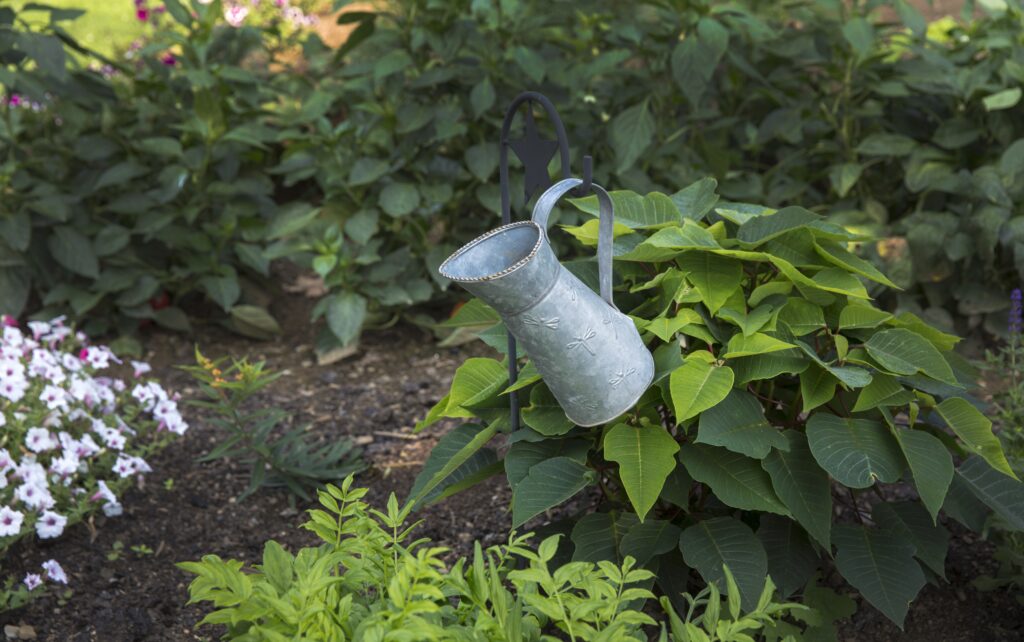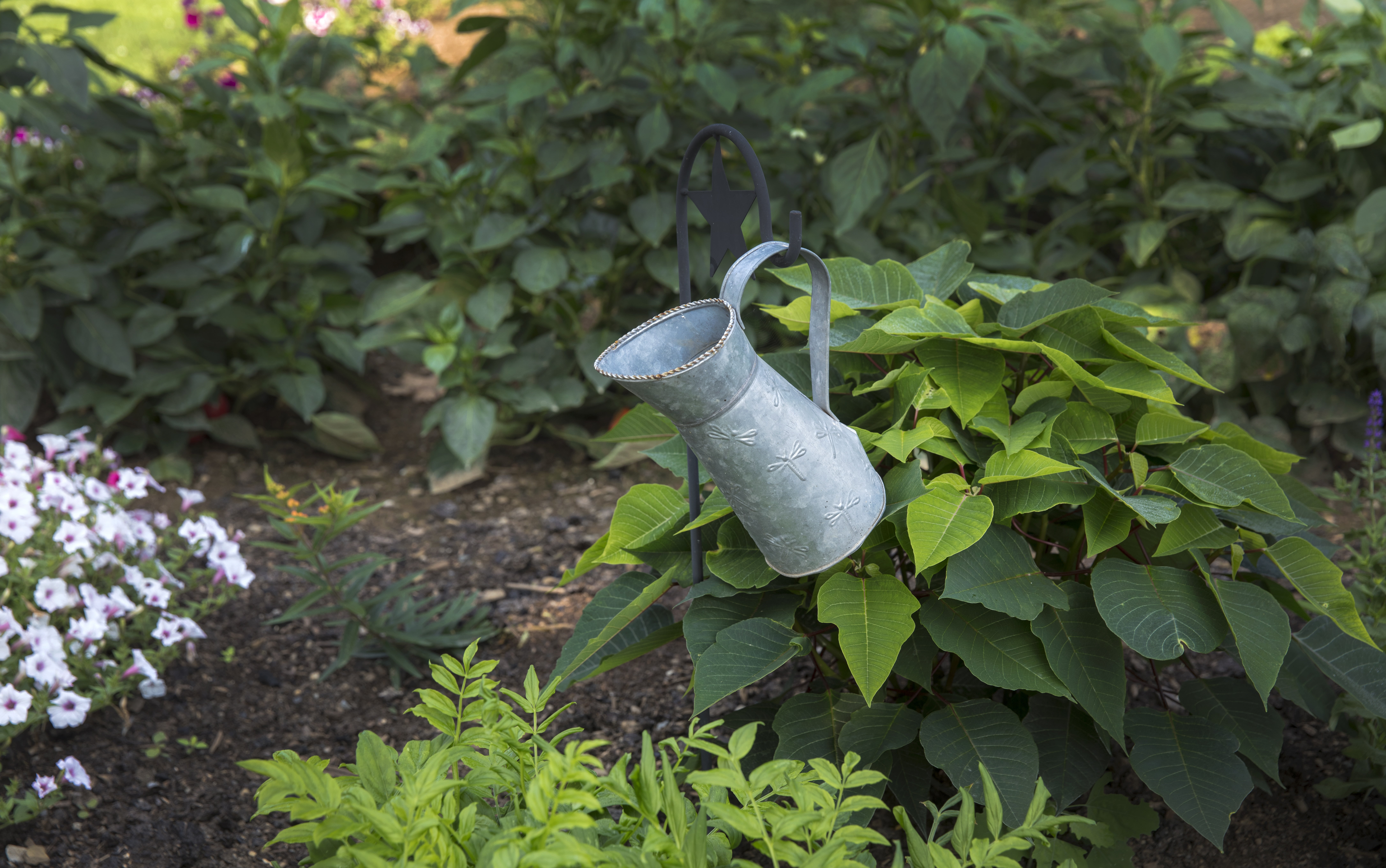Planting tomatoes in Zone 8 can be a rewarding and fruitful endeavor for any avid gardener. With a favorable climate and ample sunlight, this region provides an ideal environment for tomato cultivation. However, it is crucial to adhere to specific guidelines and timings to maximize the growth and yield of your tomato plants. In this article, you will explore the optimal conditions, proper techniques, and recommended varieties for successfully planting tomatoes in Zone 8.

Choosing Tomato Varieties
Determining suitable tomato varieties
When selecting tomato varieties, it is crucial to consider factors such as climate, growing conditions, and personal preferences. Different tomato varieties have varying attributes, including taste, size, color, and disease resistance. Determining which tomato varieties are suitable for your specific needs will ensure a successful and satisfying harvest.
To begin, assess your growing conditions such as the amount of sunlight your garden receives, the average temperature, and the length of your growing season. Some tomato varieties, known as determinate types, are better suited for shorter growing seasons, while indeterminate varieties tend to thrive in longer seasons. Additionally, consider the size and layout of your garden, as determinate varieties are more compact and well-suited for smaller spaces, while indeterminate varieties may require staking or trellising.
Considering growing conditions
In Zone 8, where warmer temperatures prevail, selecting tomato varieties that tolerate heat and humidity is essential. Certain tomato varieties are specifically bred to thrive in such conditions. Look for varieties labeled as heat-tolerant or recommended for southern regions. These types of tomatoes are more likely to withstand the higher temperatures and humidity levels that are common in Zone 8.
Furthermore, it is important to consider the specific microclimates within Zone 8. Factors such as local weather patterns and the presence of shade or protection from wind can greatly influence the suitability of certain tomato varieties. Consult with local experts or experienced gardeners in your area to gather valuable insights and recommendations tailored to your precise location within Zone 8.
Choosing disease-resistant varieties
Tomato plants are susceptible to various diseases, including blight, wilt, and viruses. To mitigate the risks associated with these diseases, choosing tomato varieties that are resistant to common diseases is highly recommended. Look for varieties labeled as disease-resistant or tolerant to specific diseases prevalent in your region.
Resistant varieties often possess genetic traits that make them less vulnerable to certain diseases. By selecting disease-resistant tomato varieties, you can increase the likelihood of a healthy and productive crop, especially in environments where disease pressure is high.
Preparation
Selecting the right site
Before planting tomatoes, it is essential to carefully select the right site. Tomatoes require a minimum of 6-8 hours of direct sunlight daily to thrive. Therefore, choose a location in your garden that receives ample sunlight throughout the day. Avoid areas shaded by trees or buildings as they can impede the adequate amount of sunlight required for tomato plants.
In addition to sunlight, ensure the site has well-drained soil to prevent waterlogging and the potential for root rot. A soil pH between 6.0 and 7.0 is ideal for tomatoes. Consider testing the soil’s pH and nutrient levels, as well as its texture and structure, to determine if any amendments or adjustments are necessary.
Preparing the soil
Preparing the soil adequately is crucial for establishing healthy tomato plants. Start by removing any weeds or grass from the planting area. This can be achieved by manually pulling them or using appropriate gardening tools. Once the area is clear, loosen the soil using a garden fork or tiller, breaking up any clumps and ensuring proper aeration.
Furthermore, incorporating organic matter into the soil is highly beneficial for tomato plants. Well-rotted compost, aged manure, or other forms of organic matter can enhance the soil’s fertility, moisture-retention capabilities, and overall structure. Spread a layer of organic matter over the planting area, then mix it into the soil using a garden fork or tiller.
Amending soil with organic matter
In addition to incorporating organic matter, it may be necessary to amend the soil with specific nutrients to optimize tomato plant growth. Conduct a soil test to identify any deficiencies and adjust accordingly. Common soil amendments include lime to raise pH levels, sulfur to lower pH levels, and organic fertilizers to provide essential nutrients.
Amending the soil with these nutrients and adjusting pH levels as required will create an optimum growing environment for tomato plants. Following these steps ensures that the soil provides a nutritious and well-balanced foundation for healthy tomato growth.

Starting Seeds Indoors
Timing for starting seeds
Starting tomato seeds indoors is an effective method to ensure earlier and more successful germination, especially in areas with shorter growing seasons like Zone 8. The optimal timing for starting tomato seeds indoors typically begins 6-8 weeks before the projected last frost date in your area. This allows sufficient time for the seedlings to mature and develop before being transplanted outdoors.
Consult a local gardening calendar or extension service to determine the appropriate timing for starting tomato seeds in Zone 8. Keep in mind that the specific planting dates may slightly vary depending on your location within the zone and any microclimatic factors that may exist.
Materials needed for seed starting
To successfully start tomato seeds indoors, gather the necessary materials. You will need seed trays or containers with drainage holes to prevent waterlogging, seed-starting mix or a well-draining potting soil, and a source of warmth and light such as a heat mat and grow lights. Additionally, use clear plastic covers or domes to create a humid environment and promote germination.
Fill the seed trays or containers with the seed-starting mix, ensuring it is moist but not overly wet. Plant the tomato seeds according to the recommended depth indicated on the seed packet. Place the trays or containers on a heat mat set to the appropriate temperature for tomato germination, usually around 70-75°F (21-24°C).
Transplanting seedlings outdoors
As the tomato seedlings grow and develop their true leaves, they will eventually outgrow their initial containers and require transplanting. Before transplanting, harden off the seedlings by gradually exposing them to outdoor conditions over the course of a week or two. This step helps acclimate the plants to the change in temperature, wind, and sunlight they will experience in the garden.
When the risk of frost has passed and the soil has warmed, typically after the last frost date in Zone 8, prepare the planting area in the garden. Dig holes spaced according to the specific variety’s recommended spacing, typically 2-3 feet (60-90 cm) apart.
Carefully remove the seedlings from their containers, being mindful not to disturb the root system. Place each seedling in its respective hole, ensuring that the top of the root ball is level with or slightly below the surface of the soil. Gently backfill the hole, firming the soil around the base of the seedling to provide stability.
Water the newly transplanted seedlings thoroughly, and consider using a protective covering like a frost cloth or row cover for the first few nights to provide additional protection from any unexpected late-season frost events.
Direct Sowing
Ideal time for direct sowing
In addition to starting seeds indoors, tomatoes can also be directly sown into the garden in Zone 8. The ideal time for direct sowing generally falls around the last frost date in your area. This method eliminates the need for indoor seed starting and allows the tomato seeds to germinate in their final growing location.
To determine the ideal time for direct sowing in Zone 8, consult a local gardening calendar or extension service. Take into account any specific microclimates or regional considerations that may affect the recommended planting dates.
Preparing soil for direct sowing
Preparing the soil for direct sowing involves similar steps to those mentioned earlier, such as removing weeds or grass, loosening the soil, and incorporating organic matter. However, it is essential to ensure that the soil has reached an appropriate temperature for successful seed germination.
Use a soil thermometer to monitor the soil temperature. Tomato seeds typically germinate best when the soil temperature is consistently above 60°F (15°C). If the soil is cooler than this threshold, you may need to wait until it warms up or consider using techniques like raised beds or black plastic mulch to warm the soil more quickly.
Sowing tomato seeds directly
Once the soil is prepared and the conditions are favorable, it is time to sow the tomato seeds directly into the garden. Create furrows or small holes in the soil spaced according to the recommended spacing for the specific tomato variety. Typically, this is 2-3 feet (60-90 cm) between plants.
Place the tomato seeds in the furrows or holes, following the recommended planting depth as indicated on the seed packet. Cover the seeds with soil and gently firm the surface to ensure good seed-to-soil contact. Water the planting area thoroughly, keeping the soil moist but not saturated.
As the tomato seedlings emerge, thin them out if necessary to maintain the recommended spacing. It is important to provide sufficient air circulation and room for the plants to grow and develop properly.

Protecting from Frost
Understanding frost dates
In Zone 8, late-season frosts can occur, even after the expected last frost date has passed. Understanding the average dates of potential frosts in your area is crucial for protecting your tomato plants. Late frosts can cause significant damage to young or vulnerable plants and may result in a reduced or failed harvest.
Using protective coverings
Protecting tomato plants from frost can be accomplished by using various types of coverings. Frost cloths, row covers, or even old sheets and blankets can provide temporary protection from frost and freezing temperatures. These coverings act as insulation, trapping heat radiating from the ground and preventing the cold air from reaching the plants.
When using protective coverings, ensure they are securely anchored to prevent cold air from seeping in. However, be cautious not to leave the coverings on for extended periods during warmer weather, as this can create excessive heat buildup and potentially harm the plants.
Choosing frost-tolerant tomato varieties
Another effective approach to protect tomatoes from late-season frosts is to select frost-tolerant varieties. These varieties have been bred or naturally adapted to withstand colder temperatures without significant damage. Seek out cultivars labeled as “cold-hardy” or “frost-tolerant” when choosing tomato varieties for Zone 8.
Cold-hardy tomato varieties are more likely to withstand sudden drops in temperature and short-term cold snaps. Their ability to tolerate lower temperatures can provide additional insurance against late spring or early fall frosts. Consider exploring the wide range of frost-tolerant tomato varieties available to find the most suitable options for your specific needs.
Watering and Mulching
Maintaining optimal soil moisture
Proper watering is essential for tomato plants to thrive and produce a bountiful harvest. Tomato plants have specific moisture requirements, and maintaining optimal soil moisture levels is crucial for their overall health and productivity. In Zone 8, where hot and dry summer conditions can prevail, managing soil moisture becomes even more critical.
Regularly monitor the moisture levels in the soil by inserting your finger or a moisture meter into the soil around the root zone. Water the tomato plants deeply when the top 1-2 inches (2.5-5 cm) of soil feels dry. However, avoid overwatering, as excessive moisture can lead to root rot and other diseases.
Proper watering techniques
When watering tomato plants, it is best to provide water at the base of the plants rather than from above. This helps prevent the foliage from becoming excessively wet, reducing the risk of fungal diseases. Use a watering can or a soaker hose to deliver water directly to the soil, aiming for the root zone.
Water the plants early in the morning to allow ample time for the foliage to dry before evening. This helps minimize the risk of disease development. Avoid watering late in the day or during the evening, as the extended periods of moisture on the foliage can create a favorable environment for fungal growth.
Importance of mulching
Mulching is beneficial for tomato plants in multiple ways. It helps conserve soil moisture by reducing evaporation, regulates soil temperature fluctuations, prevents weed growth, and improves overall soil health. In Zone 8, where hot summer temperatures can prevail, mulching plays a crucial role in conserving moisture and protecting the plants’ root system from excessive heat.
Apply a layer of organic mulch, such as straw, wood chips, or shredded leaves, around the base of the tomato plants, leaving a small gap around the stem to prevent stem rot. The mulch should be approximately 2-3 inches (5-7.5 cm) thick. Replenish the mulch as needed throughout the growing season to maintain an adequate depth and maximize its benefits.
Support and Staking
Providing support for tomato plants
Tomato plants are vining plants that typically benefit from some form of support or staking. Providing support helps keep the plants upright, prevents sprawling, and facilitates better air circulation and sunlight penetration. Proper support also promotes healthier plant growth and minimizes the risk of disease by reducing contact between the foliage and the ground.
Before planting the tomato seedlings or transplants, install the chosen support structure. Options include trellises, cages, stakes, or a combination of these methods. Select a method that suits the specific tomato variety, considering its growth habit and anticipated size.
Types of staking methods
Staking methods for tomato plants vary depending on personal preference and the specific requirements of the chosen variety. Some common staking methods include single-stem staking, where a single main stem is trained vertically up a stake, and the Florida weave method, which involves weaving twine between stakes on either side of the row to support multiple stems.
Cages are another popular method of support. Tomato cages can be purchased or made from various materials such as wire mesh or wooden stakes. These cages surround the plant and provide support as the tomatoes grow and mature. Ensure the cages are tall enough to accommodate the anticipated height of the tomato plants.
Training tomato plants
As the tomato plants grow, it is important to train and secure the stems to the chosen support structure. Individual vines or stems can be gently tied to the stake or trellis using soft plant ties, twine, or cloth strips. Be careful not to tie the stems too tightly, as this can damage the plant or restrict its growth.
Regularly check the plants and adjust the ties or supports as necessary throughout the growing season. Properly trained and supported tomato plants are more likely to produce larger, healthier fruits and are easier to manage and maintain.
Pruning and Suckering
Benefits of pruning tomato plants
Pruning tomato plants offers several advantages, including improved airflow, increased sunlight exposure, enhanced disease prevention, and higher fruit quality and yield. Removing excess foliage and growth allows better air circulation, reducing the chances of fungal diseases such as blight. Furthermore, pruning helps redirect the plant’s energy towards fruit production rather than unnecessary foliage growth.
Identifying and removing suckers
Tomato suckers are auxiliary shoots that emerge from the leaf axils, typically found at the intersection between the main stem and the branches. These suckers compete for the plant’s resources and can lead to excessive foliage growth at the expense of fruit production. Removing suckers helps maintain a more manageable and productive plant.
To identify suckers, look for small, green shoots emerging from the leaf axils. Pinch or prune the suckers off using clean pruning shears or simply pinch them off with your fingers. Remove suckers regularly as they appear throughout the growing season to promote healthier and more fruitful tomato plants.
Pruning techniques
When pruning tomato plants, it is important to use proper techniques to avoid causing damage or stress to the plants. Start by removing any damaged or diseased foliage, as well as any leaves or branches that touch the ground. This minimizes the risk of soil-borne diseases and reduces the potential for pest infestations.
Next, selectively remove excess foliage that shades the developing fruits or obstructs airflow. Focus on removing lower branches and suckers that emerge at the lower parts of the plant. Additionally, consider pruning any excessive lateral branches that hinder airflow or lead to overcrowding within the plant.
Fertilizing
Understanding tomato nutrient requirements
Tomato plants require a balanced supply of essential nutrients to grow and produce an abundant harvest. Understanding their nutrient requirements is crucial for promoting healthy plant growth, fruit development, and overall productivity. The primary macronutrients required by tomatoes are nitrogen (N), phosphorus (P), and potassium (K), often referred to as NPK.
Nitrogen supports vegetative growth and foliage development, phosphorus promotes root development and fruit formation, and potassium enhances overall plant health and disease resistance. Additionally, tomatoes also benefit from secondary macronutrients such as calcium (Ca) and magnesium (Mg), as well as various micronutrients like iron (Fe), manganese (Mn), and zinc (Zn), among others.
Choosing the right fertilizer
Selecting the appropriate fertilizer for tomato plants involves considering their specific nutrient requirements and the characteristics of the soil. Conduct a soil test to determine the nutrient levels and pH of the soil, as this information will guide your fertilizer selection and application rates.
In general, balanced fertilizers with an equal or near-equal ratio of NPK, such as 10-10-10 or 14-14-14, are suitable for tomatoes. These fertilizers provide a well-rounded supply of essential nutrients. However, based on the soil test results, you may need to adjust the fertilizer formulation or apply specific nutrient amendments as recommended by the test.
Application and timing
Apply fertilizer to tomato plants according to the recommended application rates and timing. When planting seedlings or transplanting, incorporate a slow-release fertilizer into the planting hole or trench to provide a gradual and sustained supply of nutrients. Follow up with additional fertilizer applications throughout the growing season based on the specific fertilizer’s instructions and the tomato plants’ nutritional needs.
Avoid excessive or improper fertilizer applications, as this can lead to nutrient imbalances or damage to the plants. Always water the plants after applying fertilizer to aid in its absorption and minimize the risk of burning the roots. Monitoring the plants for signs of nutrient deficiencies or excesses and adjusting future fertilizer applications accordingly will help maintain healthy and productive tomato plants.
Harvesting
Determining tomato maturity
Knowing when to harvest tomatoes is essential for ensuring optimal flavor, texture, and nutritional quality. Tomatoes should be harvested at their peak of ripeness to enjoy the best taste and texture. The precise timing for harvesting tomatoes is influenced by factors such as the variety, weather conditions, and personal preferences.
Indications that tomatoes are approaching maturity include changes in color, firmness, and aroma. Depending on the variety, ripe tomatoes can range in color from green to yellow, orange, red, or even purple. Generally, tomatoes are ready to harvest when they reach their characteristic mature color and yield slightly to gentle pressure when gently squeezed.
Harvesting techniques
To harvest tomatoes, grasp the fruit gently and twist it until it separates from the stem. Avoid pulling or yanking, as this can damage the plant or neighboring fruits. Harvesting too early or too late can affect the flavor and texture of the tomatoes, so aiming for the optimal ripeness stage is crucial.
Handle harvested tomatoes with care to avoid bruising or crushing them. Place them in shallow baskets or trays without stacking them to prevent excessive weight and pressure. Sort the harvested tomatoes based on their size, color, or intended use to facilitate proper storage and usage.
Storing and using tomatoes
After harvesting, it is important to store tomatoes properly to maintain their freshness and quality. Tomatoes should be stored at room temperature, away from direct sunlight, and in a well-ventilated area. However, avoid storing tomatoes in excessively cool or warm environments, as extreme temperatures can degrade their flavor and texture.
If you have harvested a large quantity of tomatoes, consider preserving them through canning, freezing, or making sauces and salsas. Properly preserved tomatoes can be utilized throughout the year, allowing you to enjoy their flavors long after the growing season has ended.
In conclusion, successfully growing tomatoes in Zone 8 requires careful consideration of tomato varieties, suitable growing conditions, disease resistance, timing for starting seeds, proper site selection, soil preparation, protection from frost, appropriate watering and mulching techniques, support and staking methods, pruning and suckering techniques, fertilization practices, and proper harvesting and utilization of the mature fruits. By following these guidelines, you can optimize your tomato gardening experience and enjoy a plentiful harvest of delicious and healthy tomatoes in Zone 8.



